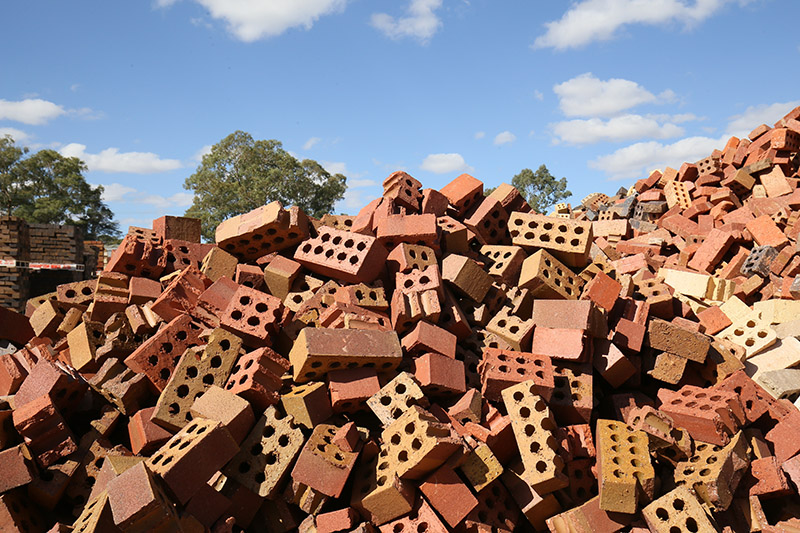In the world of today, it is now a known fact that construction waste makes up a significant percentage of the total waste. Each time construction work occurs, there is always a large amount of debris that needs to be discarded.
Apart from the effects of these construction wastes on the natural environment, we must also question, how long the production of construction materials from finite resources will continue to sustain a growing population.
At this rate, there may not be available materials needed for construction. As a result, taking waste reduction and recycling seriously should be the priority.
If you have decided to recycle your construction wastes, the tips in this article will help you to go about it without difficulty.
Recyclable Construction Wastes
For proper recycling, it is necessary to know the list of recyclable construction materials. You can recycle most materials used in the building sector, and below is a list.
- Wood materials and lumber can be converted to biomass fuel.
- Trees and vegetation removed can be replanted or used for biomass fuel.
- Cardboard and paper can be used for pulping.
- Fixtures and appliances such as bathtubs, pipes, and sinks for refitting elsewhere.
- Roofing, doors, and windows, as long as they are not damaged and still reusable.
- You can melt metals and convert them to other products
Below are some tips on how to recycle these materials efficiently without stress.
Locate A Recycling Center In Your Locality
Before you begin construction work, search the locality of the construction site for a recycling center that can recycle the debris you are likely to gather once construction starts.
The most important thing is that the recycling center must not be far away. A recycling process that will consume too much of your effort, time, and gas to move the construction waste to the recycling center is not worth it.
Once you have found a recycling center nearby, contact them to know their business hours and what type of construction waste they will take for recycling. Find out if there are any weight restrictions for construction weight materials or amounts that can be processed.
Sort out the debris they will take and transport it to the center. Put the trips to the recycling center in your construction schedules to prepare for a significant impact on your building plans. Carry these wastes on your way out to pick up needed building materials
Reuse Materials In The New Building
Every new day, the prices of construction materials increase, and they are becoming unaffordable. Using materials that have been used and torn apart from the old building can go a long way in saving you some cost and stress it might take you to discard them.
Throwing used construction materials away can be a waste as many can still fit well into the new construction. You may not necessarily need to demolish the old building; you can move some materials elsewhere to redecorate.
Examine the list of construction materials and find means to reduce the waste you will need to recycle. Lumbers that are left when building a previous home van be used for decking railings of a new project.
You don’t have to limit yourself to buying every material you need; materials in the surroundings can serve some functions too. For example, dirt removed while surviving a land can be reused to grade the land after construction. Plants removed can be taken to a new location and replanted or incorporated into another part of the construction site.
Deconstruct Rather Than Demolish
Take apart construction materials of a housing project instead of destroying them. If you can’t do this by yourself, some companies can help with separating construction materials without damaging them.
Materials that you can reuse but are not needed to build the new housing project can be taken elsewhere or auctioned to raise more funds.
Sort Out The Waste
It is crucial to separate your waste before transferring it to a recycling center. Otherwise, you might end up taking materials that can’t be recycled along. Not understanding the concept of separating construction waste can cost you a lot of time and money.
Many companies charge to help separate construction waste, but extra expenses are unnecessary. Materials eligible for recovery are debris, packaging, new materials’ scraps, and old materials. You can recycle materials such as roofs, doors, windows, appliances, masonry materials, and other fixtures.
Construct With Standard Dimensions
Some companies produce construction materials with standard dimensions, and it is a means to an end of having to waste excesses when you are getting the desired size of a particular material.
Building house projects with the standard dimensions help to save time, effort, and money. All you need to do is order materials of standard dimensions, have them delivered at the construction site, and continue with the incorporation of these materials.
Standard dimensions enable you to reuse the materials left after construction in the next housing project.
Practice On-Site Recycling
Another great way to recycle construction waste is to practice on-site recycling. On-site recycling allows everyone to participate in the recycling process or to dispose of construction waste safely.
Make arrangements for containers to drop reusable, recyclable materials and waste and ensure every on-site worker drops the materials into the category they belong. Non-recyclable materials like doors and windows should be removed during deconstruction.
Use cut branches of trees removed from the construction site for landscaping mulching.
Now Is The Time To Work On Achieving Your Recycling Goal
Participating in construction waste recycling can save you some costs and make our environment a better place to live. Many construction wastes, when dumped anyhow in the environment, can cause havoc on human well-being. For instance, the introduction of lead into the water can be poisonous, thereby killing our aquatic animals.
If you combine some of the tips in this article and apply them as expected, you can be assured that your construction wastes will be adequately recycled.

